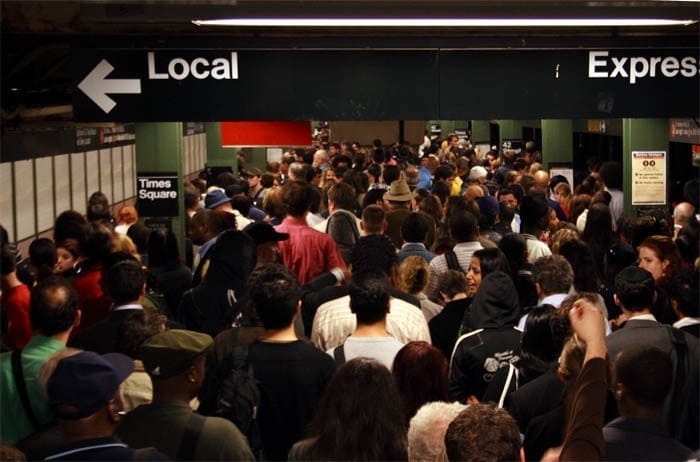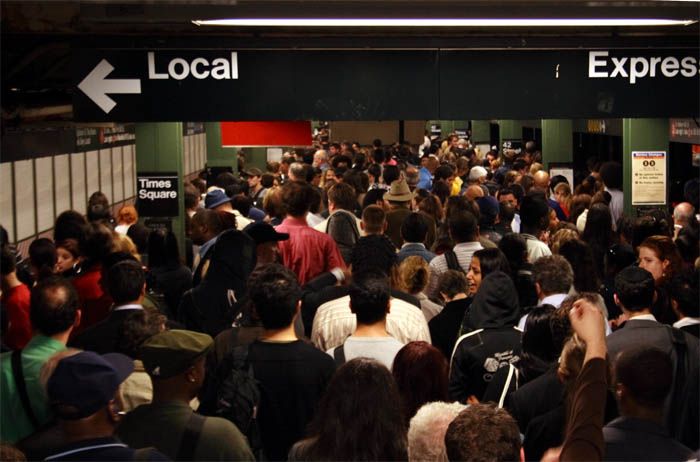The Real Reason Your Train Is So Crowded And Late


It’s not your imagination.
Trains are indeed more crowded, which makes them late, which makes them crowded, as Gothamist paraphrases in one brilliantly succinct headline. But the situation is only bound to get worse unless people learn some basic rush hour etiquette, according new data published by the New York Post.
Here are some figures:
Weekday trains experienced overcrowding delays a staggering 14,843 times in December — the most recent month for which data were available.
That is a 113 percent increase from a year earlier.
Weekends are even more sluggish:
Weekend trains were delayed in reaching the end of the line 2,314 times because of overcrowding in December, a 146 percent spike from 941 during that month in 2013.
As we reported last month, on the scale of snail-paced to lifeless, the D was ranked the most dependable of all trains, while the F train ranked the worst, according to MTA data.
The reasons for the delays include not just track repairs and a record number of passengers riding the subway system – up to six million a day – but also commuters’ infuriating lack of manners, such as not letting folks off the train before getting on.

In order to address the problem, last month, the MTA unrolled its courtesy campaign, with common sense tips like “don’t groom on the subway” and “keep your legs together.” In addition, the MTA is considering placing platform conductors at busiest areas, in order to help direct the crowds.
“[W]e already have platform conductors assigned to some of our busiest stations during rush hours to help speed the process of loading and unloading trains,” MTA spokesperson Adam Lisberg told Gothamist. “You may have seen them at 42 St-Grand Central on the 4-5-6 line, shining lights at the train conductors to indicate when they can safely close the doors. We’re considering whether more personnel on station platforms could help alleviate crowding and delays.”
The MTA also recently introduced I-TRAC, an electronic tracking system to help monitor delays on letter lines. The MTA’s planning team hopes to used this information to adjust the train schedule in a way that reduces delay times.




